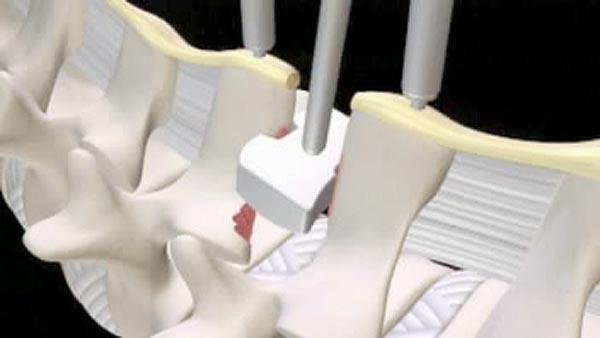What is Posterior Lumbar Interbody Fusion (PLIF)?

Why is it done?
This procedure is generally recommended for patients, who suffer from chronic pain and instability of spine due to conditions such as spondylolisthesis, disc herniation, degenerative disc disease etc that have not responded to conservative measures ( rest, physical therapy, medications) or after procedures such as bilateral laminectomy or discectomy. This procedure resolves the problem of spinal instability by infusing a bone graft within the disc space between the two vertebrae which allows new bone to grow, bridging the affected vertebrae. The procedure ultimately aims at achieving spinal stability through bony fusion. A fusion creates rigid and immovable column of bone in the problem section of the spine thus preventing any painful movement. The procedure also restores the normal intervertebral distance, thus relieving pain, numbness, and tingling caused due to nerve compression.
There are several types of spinal fusion surgery options, including:
- Posterolateral gutter fusion – the procedure is done through the back
- Posterior lumbar interbody fusion (PLIF/TLIF) – the procedure is done from the back and includes removing the disc between two vertebrae and inserting bone into the space created between the two vertebral bodies
- Anterior lumbar interbody fusion (ALIF) – the procedure is done from the front and includes removing the disc between two vertebrae and inserting bone into the space created between the two vertebral bodies
- Anterior/posterior spinal fusion – the procedure is done from the front and the back
It is important to note that with any type of spine fusion, there is a risk of clinical failure (meaning that the patient’s pain does not go away) despite achieving a successful fusion.
If you have been advised spine neurosurgery your first choice should be the latest minimally invasive technique developed by our world class hospitals in India. Most advanced Technology like Intra Operative MRI, Brain Suite and Computer Assisted Navigation System are deployed by highly trained surgeons for accurate and safe Spine Surgeries through a small incision.
Comprehensive Spine Surgery and Treatment at World Class Neurosurgery Hospitals in India:
- Dedicated team of International trained and vastly experienced Spine Surgeons, Rheumatologists, Neurologist, Physicians and Physiotherapist.
- Latest Generation Diagnostic and Imaging facilities including dynamic digital X rays, Spiral CT scanning , MRI and Electrophysiology unit all under one roof.
- Use of most advanced Surgical techniques for treatment of spinal ailments with focus on Minimal Access Micro Endoscopic spine surgeries, Functional spine preservation techniques and Spinal Arthroplasty for all( disc diseases) as well as instrumentation. Minimally Invasive Surgery ensures quicker recovery and return to active life.
- Physiotherapy and Rehabilitation by experts after the surgery help you regain functional abilities quickly helping in vastly improved overall results.
Post operative care after PLIF Surgery
Generally the patients can go home within 3-5 days after traditional PLIF and within 1-2 days after a minimally invasive PLIF. The patients are advised on wound care and how to perform their daily activities like getting up from bed, sitting, standing, walking and lifting by a physical therapist before they are discharged. Certain exercises to improve the strength and endurance of the back muscles are taught to the patient. Patients aregenerally not required to wear a back brace after surgery. Patients resume light work within 2-3 weeks following surgery and recreational sports within 3 months of surgery.
To know more about Spinal Fusion Surgery (PLIF/TLIF) in India please visit this link : https://safemedtrip.com/medical-services/spine-surgery-treatment-in-india/minimally-invasive-spinal-fusion-surgery-in-india.html

 Click to WhatsApp
Click to WhatsApp +91-9899993637
+91-9899993637





